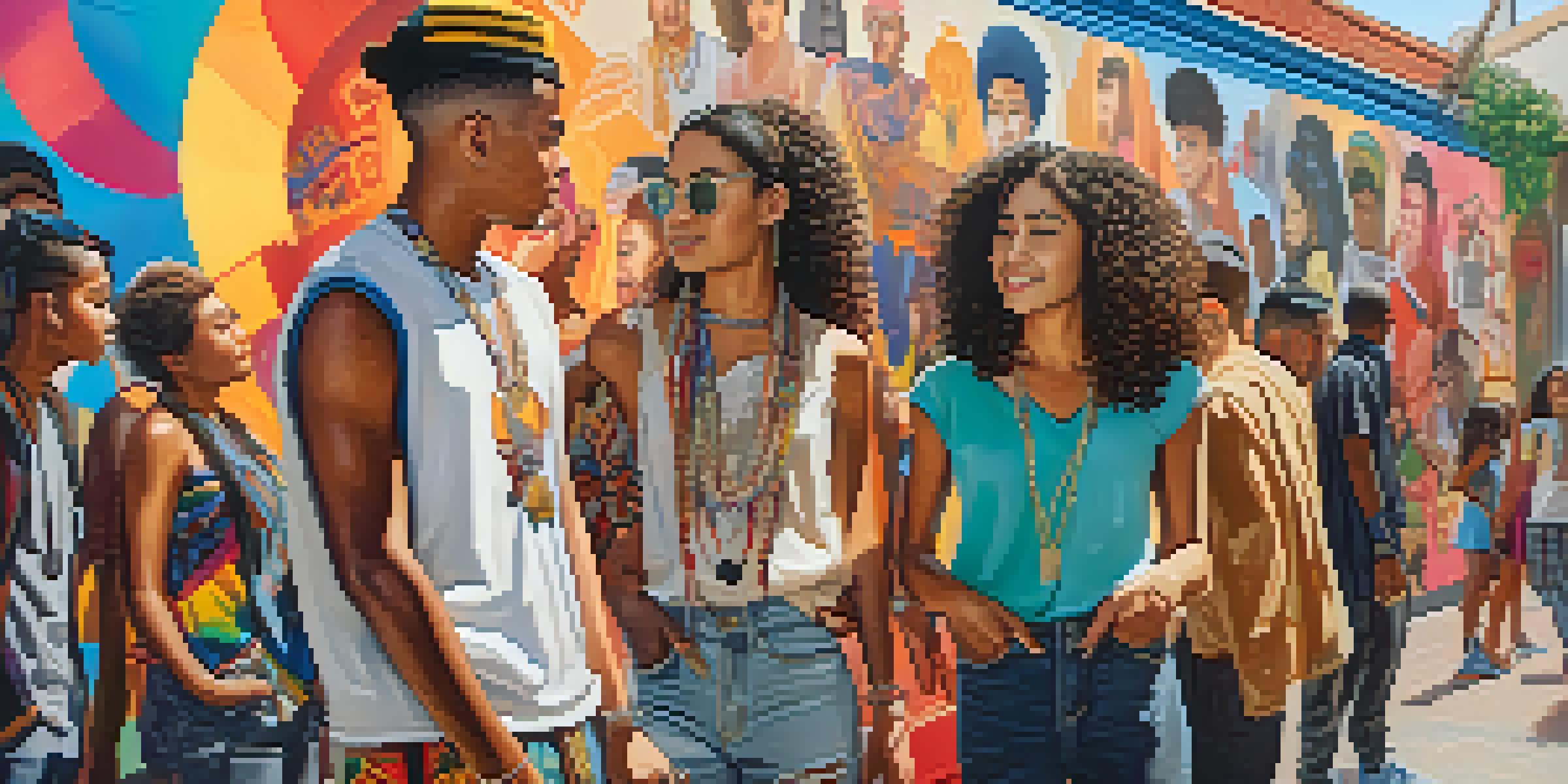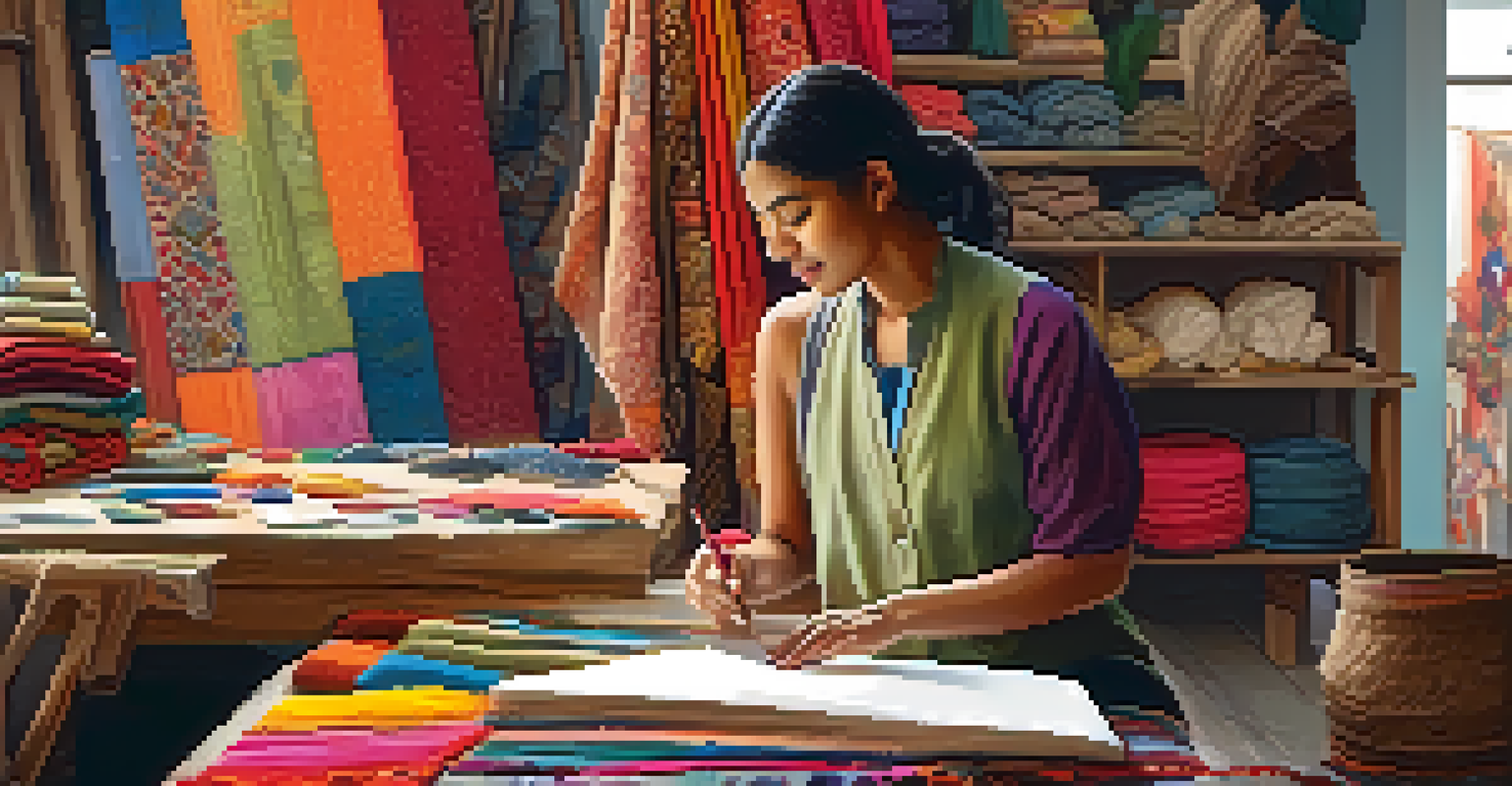Cultural Appropriation in Fashion: Youth Perspectives and Opinions

Defining Cultural Appropriation in Fashion
Cultural appropriation in fashion refers to the adoption of elements from one culture by members of another, often without permission or understanding. It's a topic that stirs heated debates, especially among young people who are increasingly aware of cultural sensitivities. For many, it's not just about fashion; it's about respect and recognition of the cultural significance behind certain styles or symbols.
Cultural appropriation is often a complex and nuanced issue, where the lines between appreciation and appropriation can become blurred.
Young people today are often equipped with the knowledge and tools to critique the fashion industry. They see how trends can sometimes erase the origins of cultural elements, turning them into mere fashion statements. This awareness has led to a demand for authenticity and acknowledgment in fashion, pushing brands to consider the implications of their designs more seriously.
As social media continues to amplify voices from diverse backgrounds, the conversation around cultural appropriation has gained momentum. Influencers and activists are using platforms to educate their followers, highlighting the need for a more respectful and informed approach to fashion. This shift is not just a trend; it's a movement towards more ethical consumption.
Youth Opinions on Cultural Appropriation
When discussing cultural appropriation, many young people express a mix of frustration and hope. They often feel that their voices are crucial in shaping the conversation, pushing for a deeper understanding of cultural contexts. Many believe that while borrowing elements can be harmful, appreciation and collaboration can foster cultural exchange if done respectfully.

For instance, some youth argue that when designers work closely with cultural communities, it can lead to beautiful, authentic creations. They cite examples of collaborations that honor the roots of various styles, allowing for a celebration of diversity rather than exploitation. This perspective emphasizes that intent matters and that meaningful engagement can bridge cultural divides.
Cultural Appropriation Explained
Cultural appropriation in fashion involves adopting elements from other cultures without proper understanding or respect.
However, the challenge remains in discerning genuine appreciation from mere appropriation. Young people are increasingly vocal about their expectations for brands to not only consult but also compensate the cultures they draw inspiration from. This insistence on accountability is reshaping how fashion operates, making it essential for brands to listen.
The Role of Social Media in Shaping Views
Social media has become a powerful tool for young people to express their views on cultural appropriation. Platforms like Instagram and TikTok allow users to share their experiences and educate others about the nuances of cultural borrowing. This democratization of knowledge empowers youth to challenge brands and advocate for change.
The goal is to create a culture of respect and understanding, where diverse influences can coexist without exploitation.
Through viral posts and hashtags, these conversations reach a wider audience, often sparking discussions that go beyond fashion. Young people can highlight the negative impacts of appropriation, sharing personal stories that resonate with others. This collective sharing creates a sense of community and solidarity among those who advocate for cultural respect.
Moreover, social media influencers play a significant role in shaping perceptions. Many use their platforms to raise awareness about cultural appropriation, encouraging followers to think critically about what they wear and why. As a result, the fashion industry is increasingly feeling the pressure to adapt and respond to these evolving expectations.
Cultural Appreciation vs. Cultural Appropriation
Understanding the difference between cultural appreciation and cultural appropriation is vital for young consumers. Appreciation involves recognizing and respecting the origins and significance of cultural elements, while appropriation often lacks that context and respect. This distinction is a key point of discussion among youth who navigate fashion trends.
Many young people advocate for cultural appreciation as a way to celebrate diversity in fashion. They argue that when done thoughtfully, borrowing elements from different cultures can lead to a richer, more inclusive fashion landscape. However, this requires a deep understanding of and respect for the cultures involved.
Youth Demand Ethical Fashion
Young consumers are increasingly advocating for brands to engage with and compensate the cultures they draw inspiration from.
Consequently, discussions around this topic often emphasize the importance of education and awareness. Young people encourage brands and consumers to engage with cultural histories and narratives, fostering a more informed approach to fashion choices. This awareness can lead to a more respectful coexistence of styles across cultures.
Fashion Brands Responding to Youth Perspectives
In response to growing concerns about cultural appropriation, many fashion brands are re-evaluating their practices. Some are starting to collaborate with artists and designers from the cultures they draw inspiration from, ensuring that these voices are heard. This shift indicates a recognition of the need for more ethical and responsible practices in the industry.
For example, brands that focus on sustainability and inclusivity are becoming more popular among young consumers. They often prioritize transparency and accountability, which resonates with the values of a generation that demands change. By aligning with these principles, brands can build trust and loyalty among their youth audience.
Additionally, some companies are launching educational campaigns to inform consumers about the cultural significance of their designs. These efforts aim to promote understanding and appreciation rather than appropriation. As brands continue to adapt, it’s clear that youth perspectives are shaping the future of fashion.
The Impact of Globalization on Fashion
Globalization has significantly influenced how cultures interact and share ideas, particularly in fashion. With the world more interconnected than ever, styles can easily cross borders, leading to a blend of cultural influences. However, this fluidity brings both opportunities and challenges regarding cultural sensitivity.
Many young people recognize that globalization can facilitate cultural exchange but also risks leading to appropriation. They advocate for a balance between sharing and respecting cultural identities, emphasizing that the story behind a style is just as important as its aesthetic. This awareness encourages a more mindful approach to fashion consumption.
Social Media Drives Change
Platforms like Instagram and TikTok empower young people to challenge cultural appropriation and promote awareness in the fashion industry.
As youth navigate the complexities of globalization, they often seek brands that celebrate diversity without exploiting it. This desire for authenticity influences purchasing decisions and drives brands to consider their impact on global cultures. Ultimately, the conversation about appropriation and appreciation continues to evolve in this global landscape.
Moving Towards a More Inclusive Fashion Future
Looking ahead, many young people are hopeful about the future of fashion and its potential for inclusivity. They aspire to see a world where diverse cultures are celebrated and respected rather than appropriated. This vision involves collaboration, dialogue, and education among designers, brands, and consumers alike.
Youth perspectives are already influencing brands to re-think their design processes, encouraging them to be more inclusive and culturally aware. As these discussions gain traction, the industry is beginning to reflect the values of a generation that prioritizes ethical practices. This shift not only benefits consumers but also enriches the fashion landscape.

Ultimately, the journey towards a more inclusive fashion future requires collective effort. By engaging in open conversations about cultural appropriation and appreciation, young people can help shape a fashion industry that honors and uplifts diverse voices. Together, they are paving the way for a more respectful and vibrant fashion world.